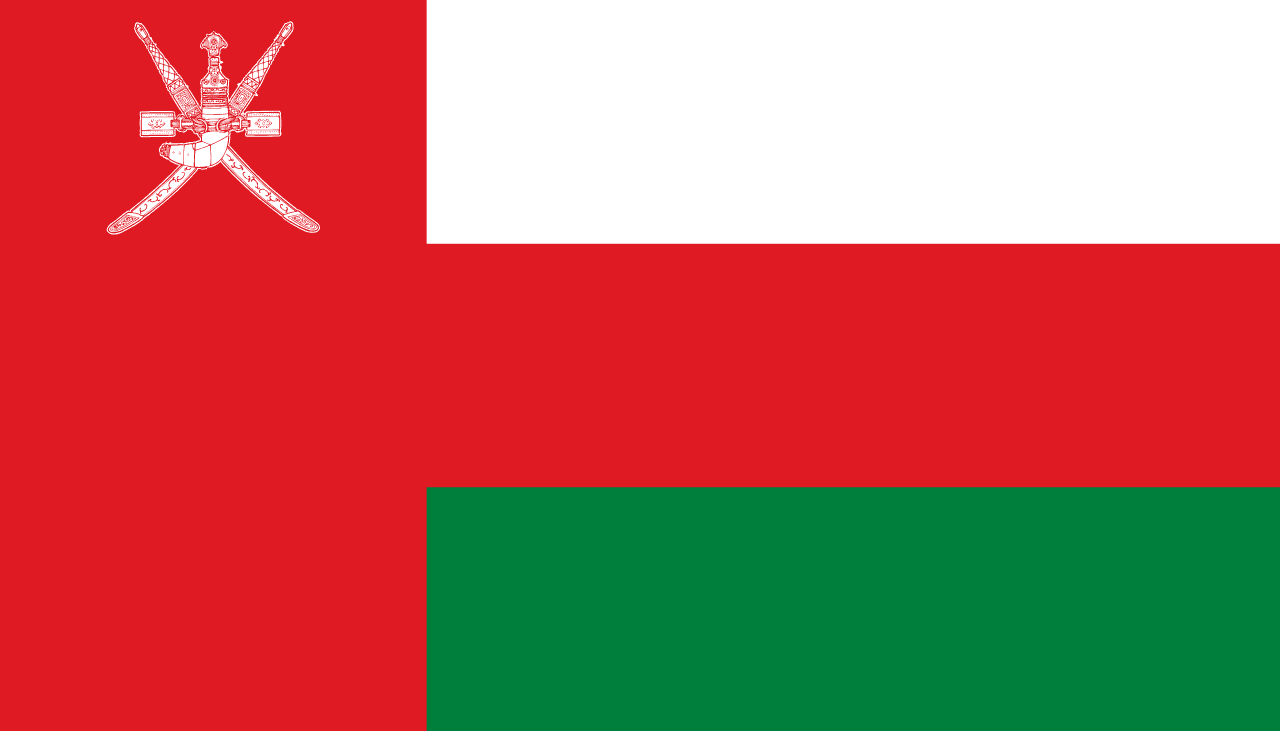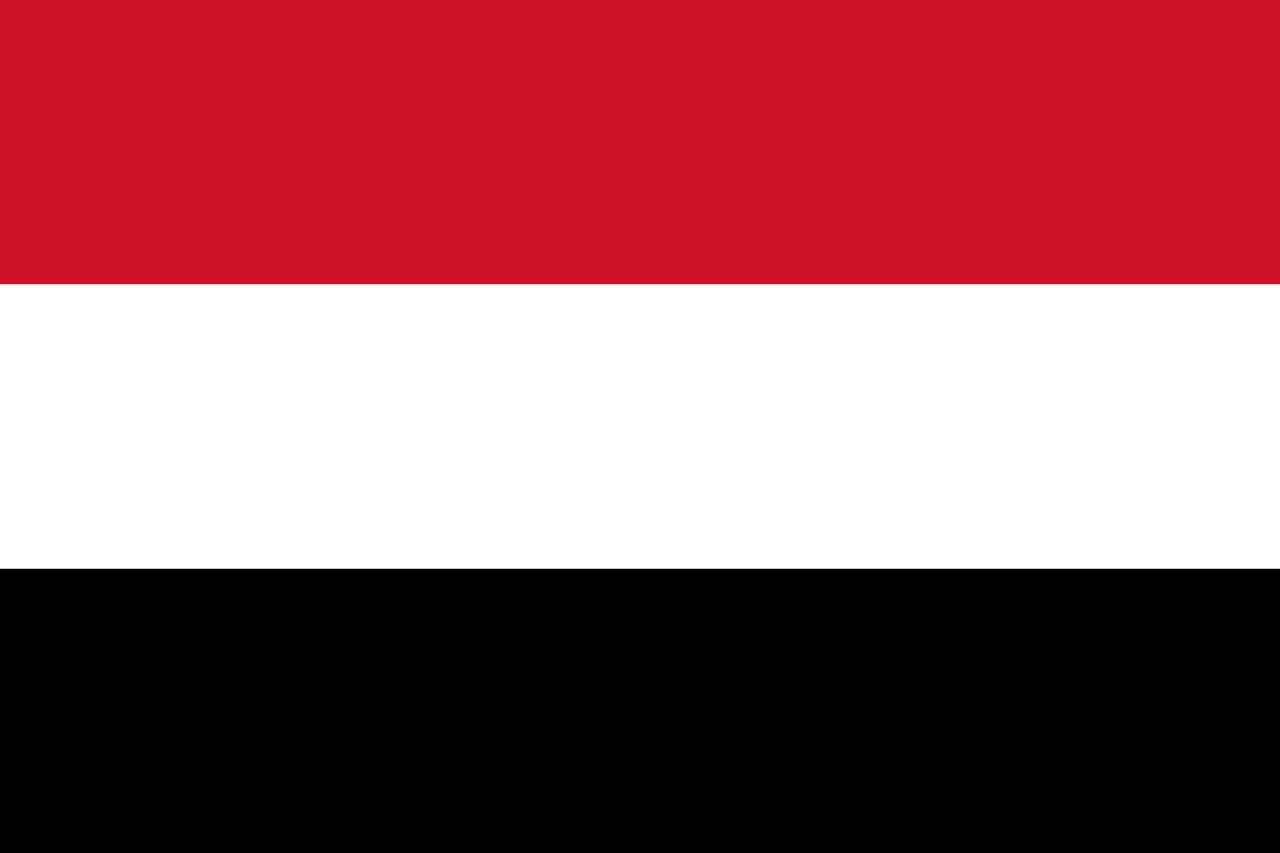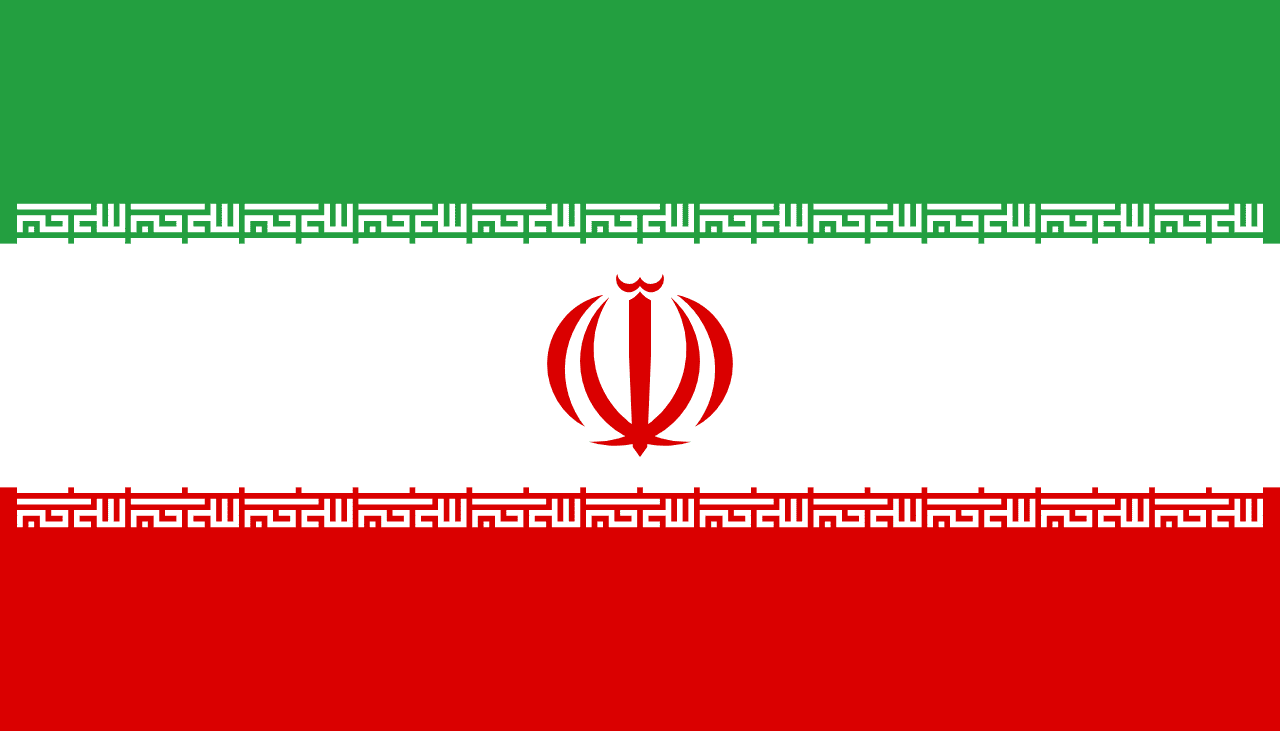Oman Flag Meaning
Three horizontal stripes of white, red, and green with a vertical red band at the hoist containing the national emblem. The design reflects Oman’s heritage, unity, and natural environment.
- Continent
- Asia
- Adopted
- 1995
- Ratio
- 1:2
- Colors
- white, red, green
- Designer
- Based on traditional Omani symbols

Symbolism
White Stripe: Represents peace and the Imamate.
Red Stripe: Represents battles fought against foreign invaders and the Al Said dynasty.
Green Stripe: Represents the fertile land, agriculture, and the Dhofar region.
National Emblem: Features crossed swords and a khanjar (dagger), symbolizing Oman’s tradition and sovereignty.
History
- 1650: Oman expelled the Portuguese and established itself as an independent sultanate.
- 1970: New national flag introduced under Sultan Qaboos, incorporating modern symbolism.
- 1995: The current version of the flag was standardized.
Trivia
- The khanjar dagger is one of the most distinctive national emblems in the world.
- Oman was one of the oldest independent Arab states in the region.
- The flag’s colors are pan-Arab, shared with other Arab nations.
- Oman’s coastline stretches over 3,000 kilometers along the Arabian Sea and Gulf of Oman.
- The red band reflects Oman’s centuries-long history of resistance to foreign powers.
Related Countries

Qatar
Asia
A national flag divided vertically with a broad white band on the hoist and a larger maroon field separated by nine white serrated points. Qatar’s unique flag ratio and color reflect its history and independence.

Bahrain
Asia
A white band on the hoist side separated from a red field by a serrated line with five triangular points, representing peace and the five pillars of Islam, while the red represents the Kharijite sect of Islam that historically dominated the region.

Yemen
Asia
Three horizontal stripes of red, white, and black representing the Pan-Arab colors that symbolize the bloodshed for freedom, bright future and peace, and the dark past of oppression, adopted when North and South Yemen unified into the Republic of Yemen.

Saudi Arabia
Asia
A green field with the Islamic declaration of faith (shahada) in white above a horizontal sword. The design emphasizes Islam as the foundation of the state.

Kuwait
Asia
Three horizontal stripes of green, white, and red with a black trapezoid on the hoist side, representing Kuwait's position in the Arab world and its transformation from pearl diving to oil wealth in the Arabian Gulf.

Iran
Asia
Three horizontal stripes of green, white, and red with a stylized emblem in the center and repeated 'Allahu Akbar' text along the borders, representing the Islamic Republic of Iran and the principles of the 1979 Islamic Revolution.